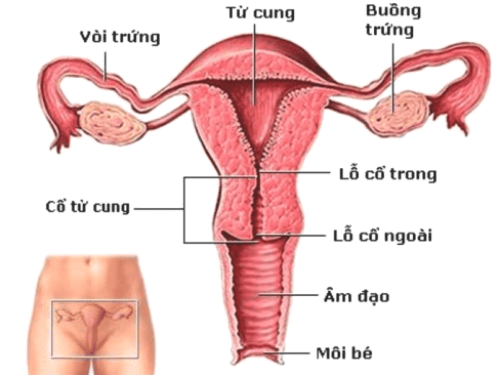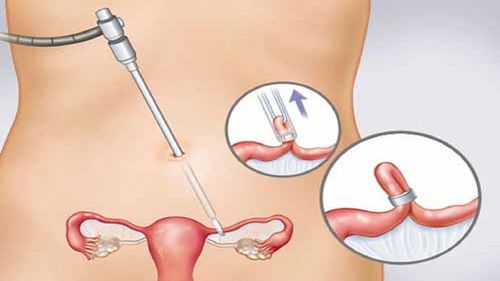This is an automatically translated article.
Ovarian cancer is a dangerous disease with a high mortality rate in the gynecological cancer group because the symptoms are not clear, so the patients are often not actively examined and detected early.1. Ovarian cancer treatments
Ovarian cancer is a malignant tumor in the ovary. The cells in melanoma are abnormal cells that divide uncontrollably. They can invade and destroy tissues and organs around the ovaries or through the bloodstream and lymphatic system to further organs in the body, forming secondary tumors in the liver, bones, brain, and lungs. ,... This process is called metastatic ovarian cancer.Commonly used methods to treat ovarian cancer include
Surgery: This includes removing the ovaries, fallopian tubes, uterus, cervix, omentum (the thin membrane that surrounds the stomach and intestines). colon) and intra-abdominal lymph nodes. In cases where the cancer has not spread and the patient wishes to have children, the doctor may remove only the cancerous ovaries and fallopian tubes. In case the cancer has spread, the doctor will remove the maximum amount of cancer tissue (tumor removal surgery) to facilitate chemotherapy or radiation after surgery to achieve good results. Chemotherapy: Using drugs orally or intravenously to kill cancer cells. This method is often used to treat advanced ovarian cancer. In addition, chemotherapy is also applied after surgery to destroy all remaining cancer cells, reducing the risk of ovarian cancer recurrence. Radiation therapy: Using high-energy radiation to destroy tumors and cancer cells. This method only affects cancer cells in the irradiated area, so it is often applied to treat ovarian cancer if the tumor is located in the pelvis. In addition, radiation therapy is also used to destroy cancer cells left in the body after surgery to remove melanoma.

Điều trị phẫu thuật tại Bệnh viện Đa khoa Quốc tế Vinmec
2. Follow-up after ovarian cancer treatment
After performing treatment methods for ovarian cancer, patients should adhere to the following notes:
Temporarily not have sex for 6 weeks to ensure effective treatment of the disease. If both ovaries are removed, the patient will experience menopausal symptoms. Doctors may prescribe hormone replacement therapy to relieve menopausal symptoms. Regular follow-up visits to the doctor for clinical examination and PAP test. The Pap smear is a cytological test to detect cervical cancer and aid in the diagnosis if ovarian cancer recurs.

Pap smear là một xét nghiệm tế bào học để phát hiện ung thư cổ tử cung
Do more imaging tests such as lung scan, tomography, abdominal ultrasound, ... after ovarian cancer treatment to screen for if the cancer recurs or metastasizes to other organs in the body . CA-125 blood test and quantification: CA-125, a tumor product, is often high in women with ovarian cancer. Therefore, applying this method after treatment will help doctors detect ovarian cancer recurrence. Patients may ask their doctor to check for other conditions because people with ovarian cancer have a higher risk of developing breast or colon cancer. Besides, the use of some anti-cancer drugs can lead to secondary cancers such as leukemia. Patients need to return to normal activities, have a healthy and scientific lifestyle after treatment.
Please dial HOTLINE for more information or register for an appointment HERE. Download MyVinmec app to make appointments faster and to manage your bookings easily.












